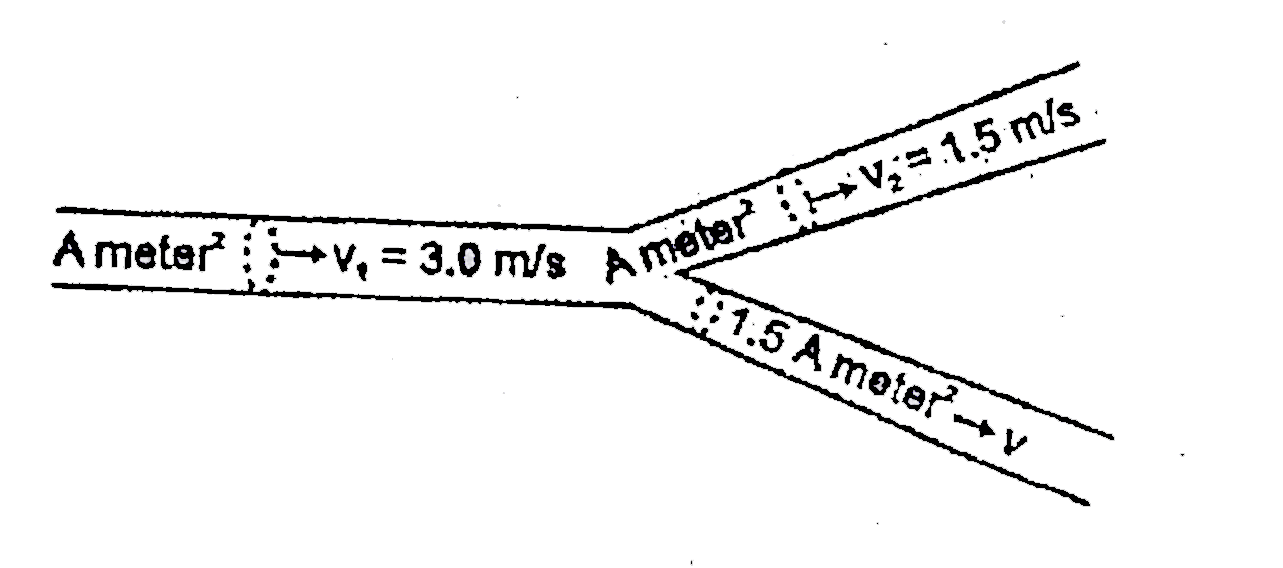Explain Poiseuille's formula for the volume of liquid flowing through a capillary tube - Describe an experiment to determine the coefficient of viscosity of a liquid by Poiseuiles formula.
Step-by-Step Solution
Step 1: Understanding Poiseuille's Formula
Poiseuille's formula describes the volumetric flow rate Q of a liquid through a capillary tube. The formula is given by:
Q=πr4(P1−P2)8ηL
Where:
- Q = volumetric flow rate (volume per unit time)
- r = radius of the capillary tube
- P1 = pressure at the inlet of the tube
- P2 = pressure at the outlet of the tube
- η = dynamic viscosity of the liquid
- L = length of the capillary tube
Step 2: Setting Up the Experiment
To determine the coefficient of viscosity η of a liquid using Poiseuille's formula, we can conduct the following experiment:
1. Materials Needed:
- A capillary tube of known radius r and length L
- A burette filled with the liquid whose viscosity is to be measured
- A stopwatch to measure the time
- A ruler to measure the height difference (if needed)
- A container to collect the liquid
2. Procedure:
- Connect the capillary tube to the burette.
- Ensure that the burette is vertical and the capillary tube is horizontal.
- Open the stopcock of the burette to allow the liquid to flow through the capillary tube.
- Measure the time T it takes for a specific volume V of liquid to flow through the tube.
- Measure the height difference h between the liquid levels in the burette before and after the flow starts.
Step 3: Calculating the Viscosity
Using the data collected:
- Calculate the pressure difference (P1−P2) using the height difference h and the density ρ of the liquid:
P1−P2=ρgh
- Substitute the values into Poiseuille's formula to solve for η:
η=πr4(P1−P2)8QL
Where Q can be calculated as:
Q=VT
Thus, the final expression for the viscosity becomes:
η=πr4ρghT8VL
Poiseuille's formula describes the volumetric flow rate Q of a liquid through a capillary tube. The formula is given by:
- Q = volumetric flow rate (volume per unit time)
- r = radius of the capillary tube
- P1 = pressure at the inlet of the tube
- P2 = pressure at the outlet of the tube
- η = dynamic viscosity of the liquid
- L = length of the capillary tube
To determine the coefficient of viscosity η of a liquid using Poiseuille's formula, we can conduct the following experiment:
- A capillary tube of known radius r and length L
- A burette filled with the liquid whose viscosity is to be measured
- A stopwatch to measure the time
- A ruler to measure the height difference (if needed)
- A container to collect the liquid
- Connect the capillary tube to the burette.
- Ensure that the burette is vertical and the capillary tube is horizontal.
- Open the stopcock of the burette to allow the liquid to flow through the capillary tube.
- Measure the time T it takes for a specific volume V of liquid to flow through the tube.
- Measure the height difference h between the liquid levels in the burette before and after the flow starts.
Using the data collected:
- Calculate the pressure difference (P1−P2) using the height difference h and the density ρ of the liquid:
Topper's Solved these Questions
- BOOK - ICSECHAPTER - MOTION IN FLUIDS EXERCISE - SHORT ANSWER QUESTIONS36videos
MOTION IN FLUIDS
- BOOK - ICSECHAPTER - MOTION IN FLUIDS EXERCISE - VERY SHORT ANSWER QUESTIONS8videos
MOTION IN FLUIDS
- BOOK - ICSECHAPTER - MOTION IN FLUIDS EXERCISE - CONCEPTUAL SHORT ANSWER QUESTIONS WITH ANSWERS16videos
MOTION IN FLUIDS
- BOOK - ICSECHAPTER - INTERNAL ENERGY EXERCISE - SELECTED PROBLEMS (FROM HEAT ENGINES)21videos
INTERNAL ENERGY
- BOOK - ICSECHAPTER - OSCILLATIONS EXERCISE - SELECTED PROBLEMS (OSCILLATION IN A TUNNEL BORED THROUGH THE EARTH)2videos
OSCILLATIONS
Similar Questions
The rate of flow of liquid through a capillary tube in an experiment to determine the viscosity of the liquid increases
View SolutionThe velocity of liquid flowing through a tube at certain distance from the axis of tube
View SolutionDefine coeffiecient of viscosity of a liquid. Write down its dimensional formula and MKS unit.
View SolutionDescribe the method of determination of surface tension of a liquid by capillary rise. Derive the formula used.
View SolutionThe volume of a liquid (V) flowing per second through a cylindrical tube depends upon the pressure gradient (p/l) radius of the tube (r) coefficient of viscosity (η) of the liquid by dimensional method the correct formula is
View SolutionIn dimension of critical velocity vc liquid following through a take are expressed as (ηxρyrz) where η,ρandrare the coefficient of viscosity of liquid, density of liquid and radius of the tube respectively then the value of x,y and z are given by
View SolutionThe rate of a flow V a of liquid through a capillary under a constant pressure depends upon (i) the pressure gradient (P/l) (ii) coefficient of viscosity of the liquid η (iii) the radius of the capillary tube r. Show dimesionally that the rate of volume of liquid flowing per sec V∝ Pr^4 /ηl
View SolutionExplain the working of a venturimeter, Obtain an expression for the volume of liquid flowing per second through pipe.
View SolutionAn incompressible liquid flows through a horizontal tube as shown in the figure. Then the velocity 'v' of the fluid is:
 View Solution
View SolutionThe velocity of liquid (v) in steady flow at a location through cylindrical pipe is given by v=v0(1−r2R2), where r is the radial distance of that location from the axis of the pipe and R is the inner radius of pipe. If R = 10 cm. volume rate of flow through the pipe is π/2×10−2m3s−1 and the coefficient of viscosity of the liquid is 0.75 N sm−2, find the magnitude of the viscous force per unit area, in Nm−2 at r = 4 cm.
View Solution

